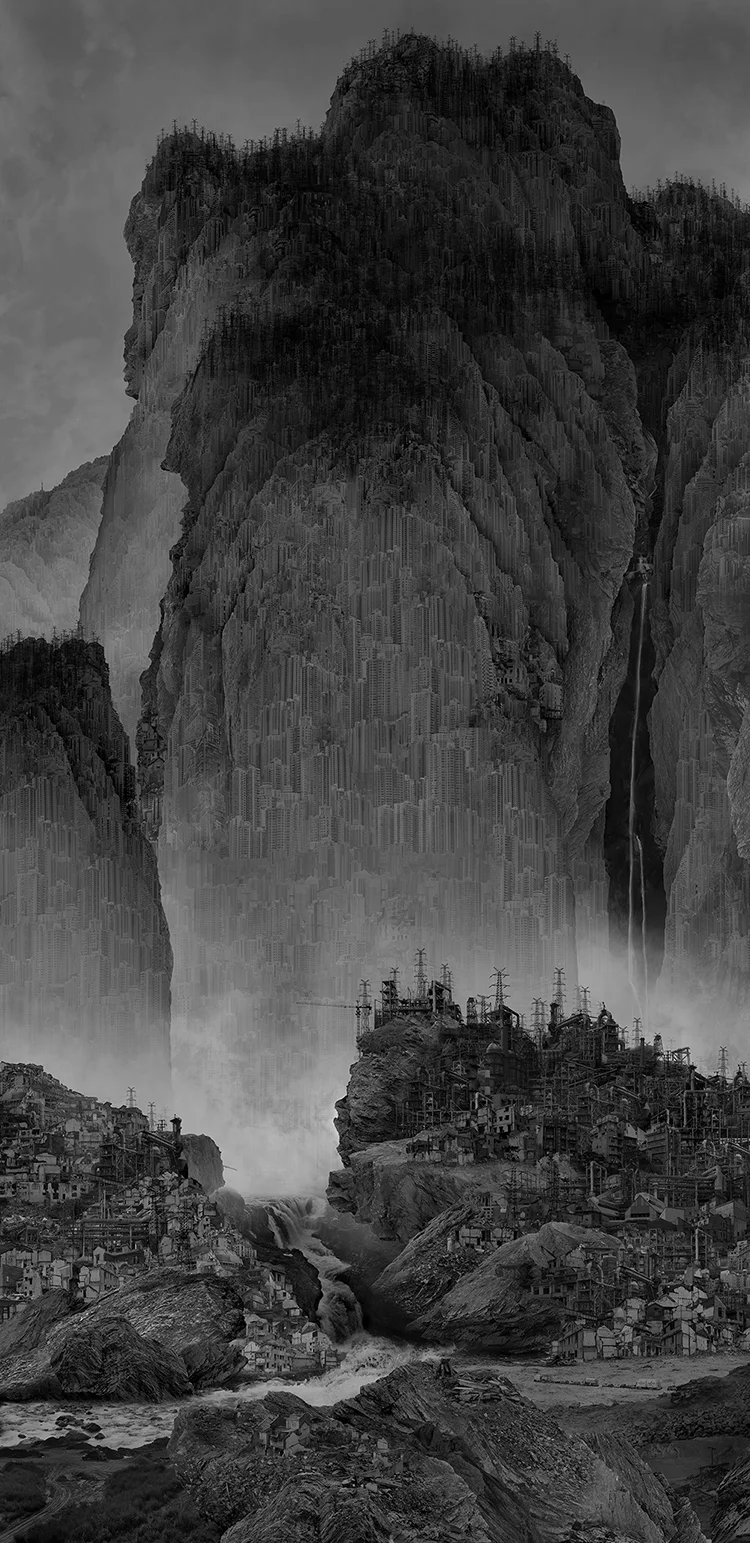Exhibition Review: Art of the Mountains: Through the Chinese Photographer's Lens
Minyak Gangkar in the Last Light of the Sun, 2003 © Zhang Anlu
By Frances Molina
Chinese legend recognizes mountains as the “pillars of heaven”, serving as a bridge between the mortal world and the playland of the gods. These peaks and mountain ranges have served for centuries as centers of sacred worship and havens for spiritual teachers and the nation’s most influential artists, painters, and poets.The immense beauty and mystery of the mountains continue to draw both tourists and locals looking for lofty escape from the turmoil of everyday life and hoping to attain the longevity, enlightenment, and fortune with their pilgrimage.
The legends and landscapes of China converge in “Art of the Mountain: Through the Chinese Photographer’s Lens”, the latest photography exhibit at the China Institute Gallery. This photography series, expertly curated by Senior Vice President of the China Institute Gallery, Willow Weilan Hai, captures the enduring and awe-inspiring majesty of China’s most famous mountains which have remained a source of artistic and spiritual inspiration for centuries.
The exhibit is divided into three sections, each dedicated to a distinct mountain range. The first, Revered Mountains of China, introduces the geography, history, and culture of the Sacred Mountains of Tibet, the Kunlun Mountains, and the Five Great Mountains, known colloquially as "the immortal mountains": Mount Hua, Mount Tai, Mount Heng, Mount Song, and Mount Huang,
The photographers featured in this first section traveled incredible heights and rugged terrain to capture the mountains in their magnitude. However, many of them owe the success of their shots to luck and chance. With the mercurial atmosphere of the mountains, the perfect image of a mountain peak set ablaze by the setting sun can vanish behind a curtain of icy mist, fog, and shadow in moments. Photographer Zhang Huajie stumbled upon one such unexpected and fleeting picturesque moment and had to use what he had on hand to capture the shot: his iPhone 6. The resulting panoramic photograph is breathtaking.
Looking East from the East Peak of Mount Hua , 2016 © Zhang Huajie,
In the second section, Landscape Aesthetics in Photograph, photographer Wang Wusheng explores the tradition of Chinese landscape painting and its lasting influence on contemporary photography. Wusheng spent much of his career capturing Mount Huangshan, using black-and-white photography and “the art of subtraction” to create a photography collection imbued with zen, an artistic philosophy of transcendence and magnificence that characterizes traditional Chinese landscape painting. Wusheng’s photos are innovative and haunting, almost unnatural in their spell-binding beauty, yet intrinsically linked to a centuries-old practice of Chinese art.
Huangshan A104, 1984 © Wang Wusheng
Finally, the third section New Landscape Photography brings technology, technique, and tradition together in a study of the enduring and evolving significance of mountains in their culture. Visual artist Yang Yongliang uses collage and images gleaned from photos of urban construction to explore the tension between urbanization and destruction, development and restriction (Travelers Among Mountains and Streams: Artificial Wonderland No. 2). In a similar vein,Yao Lu fuses modern formats with ancient landscapes, merging the traditional methods of zen paintings with contemporary minimalist photography techniques (Huangshan at Tunxi).
Travelers among Mountains and Streams, 2014 © Yang Yongliang
Huangshan at Tunxi, Anhui, 2000 © Hong Lei
At its heart, “Art of the Mountains” is a meditation on the majesty and mystery of nature and humankind’s attempt to explore the uninhibited spirit and pure tranquility of a world apart from our own. Thus, the artist’s attempt to capture the sacred spirit of the mountain is not for the sake of art alone, but another step on the search for the eternal happiness found only in nature.
"Art of the Mountains: Through the Chinese Photographer's Lens" debuted yesterday at the China Institute Gallery and will run until December 2, 2018.












